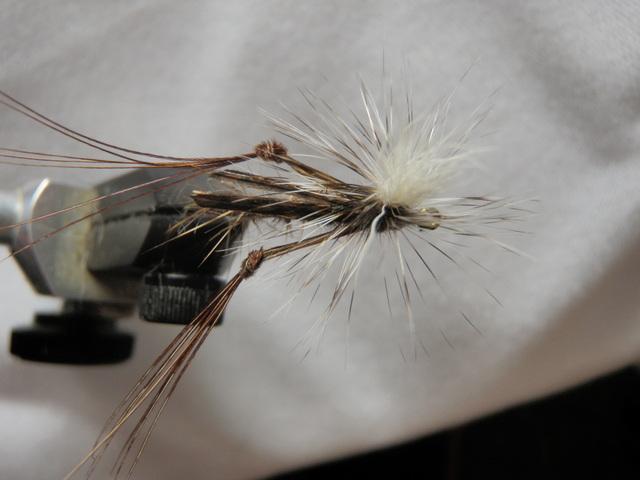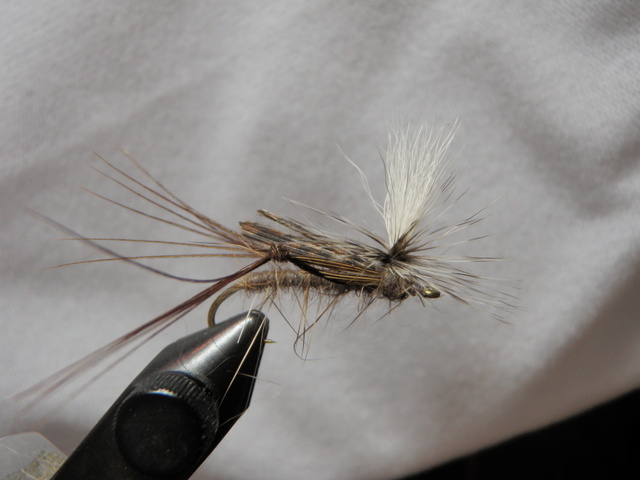My late summer hopper of choice in the last couple seasons has been the parachute hopper. The parachute style enables this fly to land right side up on every cast and the prominent knotted pheasant tail legs along with the oversized hackle seem to appeal to trout looking for a substantial meal. For some reason the gray body parachute hopper seems to appeal more to August and September feeding trout than the yellow hopper imitations that shine in June and July.
Parachute Hopper 2013 Photo Album
The parachute hopper has also become a favorite of my son. On several occasions Dan has fished lakes and streams when his father was not accompanying. When he tells me about the outing later I always ask what fly he used as I am curious to see what he selects when I am not present to influence his decision. Quite often his answer is a parachute hopper, and typically the fly generates positive results.
During the summer of 2012 I made another interesting discovery, primarily on the Taylor River where the parachute hopper was extremely productive. Near the end of the 2011 season I tied some gray parachute hoppers using a gray poly dubbing with a visible rib and these looked quite realistic compared to the undersides of naturals that I plucked from the grasses along the river. In addition to these sleek gray poly hoppers, I also tied some using natural hares mask, and these were extremely scraggly with numerous guard hairs protruding in odd angles from the rough body of the fly. My amazing discovery on the Taylor as well as other Colorado Rivers was that the trout preferred the scraggly disheveled hares ear hopper.
With this discovery I am tying twenty hares ear parachute hoppers for the 2013 season. Hopefully the fish don’t change their preferences over the winter.
After tying 20 new parachute hoppers, I decided to go through my cache of discarded flies that are unraveling or too damaged for continued service. I discovered six parachute hoppers in need of repair and refurbished them and, therefore, I have 26 as I enter the 2013 fishing season.


